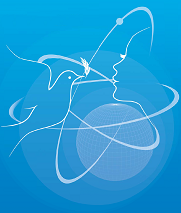Speaker
Harriet Kuranchie-Mensah
(Ghana Atomic Energy Commission, Ghana)
Description
In coastal ecosystems where bivalves are often exposed to metal contamination, dietary exposure has been recognised as a dominant uptake pathway of trace metals in bivalves. The present study employed radiotracers (65Zn and 110mAg) to assess the assimiliation efficiency (AE) of the two elements in Bloody cockles (Anadara senilis) from Narkwa Lagoon, Ghana. AE is an important parameter in determining bioavailability of trace elements from food. Zn and Ag bioavailabilty was assessed using single-feeding approach, followed by a 28-day depuration period, with two species of phytoplankton (Isochrysis galbana and Skelotonema costatum) used as food, and two different size groups of Bloody Cockles. Results indicate that AE of 65Zn and 110mAg were influenced by the phytoplankton species used as food whereas, for both algal species, AE increased slightly with increasing cockle body size. Once taken up, 65Zn was relatively strongly retained in cockle’s flesh (biological half-live: ~40 days) whereas 110mAg was rapidly released (biological half-live: ~5 days). A complementary experiment -using subcellular partitioning and in vitro digestion method- was performed to provide additional information on the proportion of 65Zn and 110mAg in the bloody cockle that is available for transfer to next trophic levels. Overall, this work highlighted that trace metal accumulation in marine filter feeders does depend on the metal bioavailability in food as well as on other biological factors, such as body size.
| Country or International Organization | Ghana |
|---|
Author
Harriet Kuranchie-Mensah
(Ghana Atomic Energy Commission, Ghana)
Co-authors
Mr
Francois Oberhaensli
(International Atomic Energy Agency, Environment Laboratories, 4, Quai Antoine Ier, MC-98000, Principality of Monaco, Monaco)
Mr
Jean-Louis Teyssie
(International Atomic Energy Agency, Environment Laboratories, 4, Quai Antoine Ier, MC-98000, Principality of Monaco, Monaco)
Dr
Marc Metian
(International Atomic Energy Agency, Environment Laboratories, 4, Quai Antoine Ier, MC-98000, Principality of Monaco)
Dr
Michel Warnau
(Department of Technical Cooperation, Division for Africa, International Atomic Energy Agency, Vienna International Centre, P O Box 100, 1400 Vienna, Austria)

